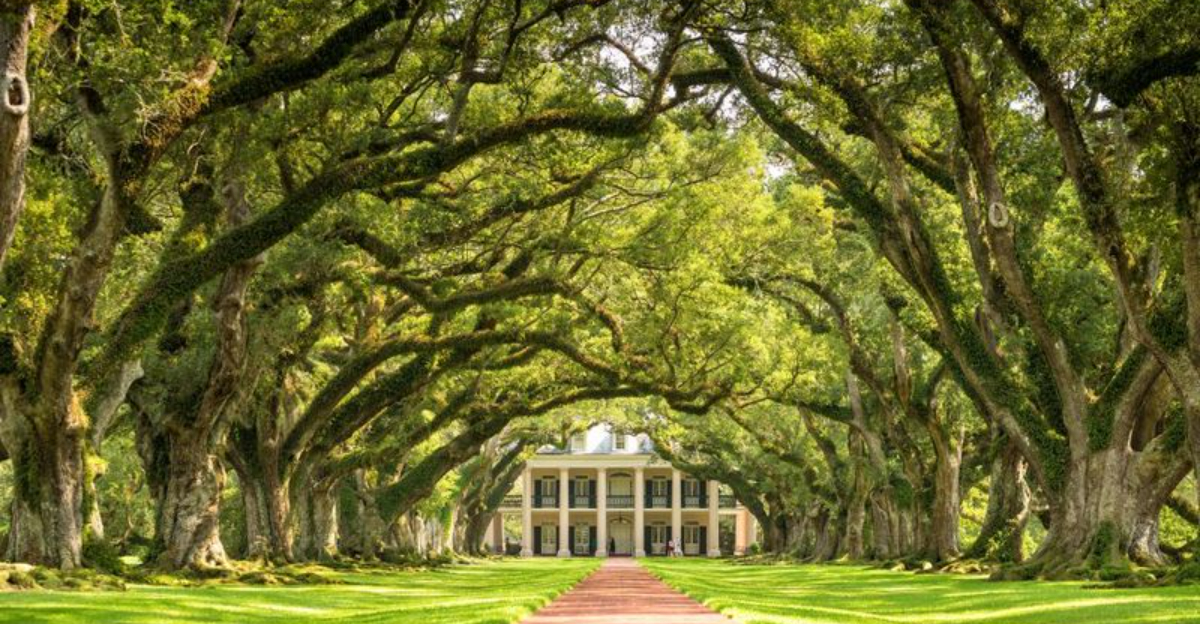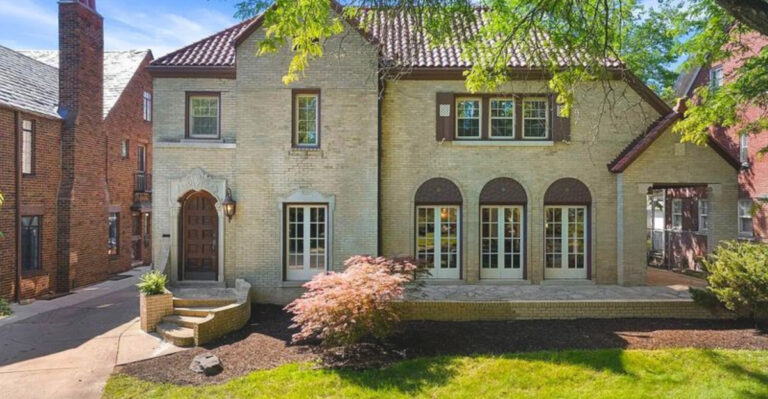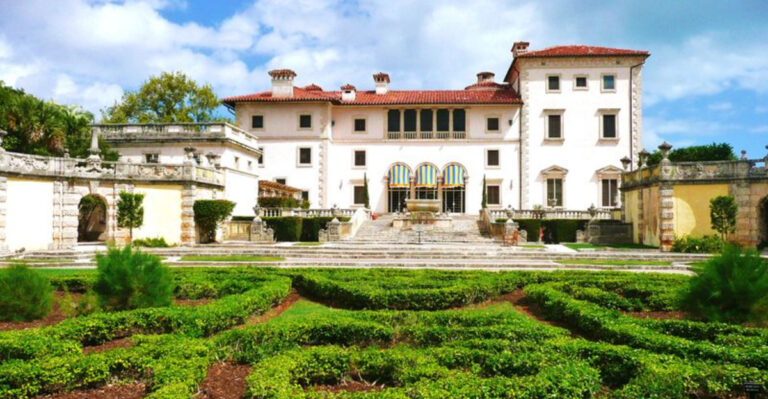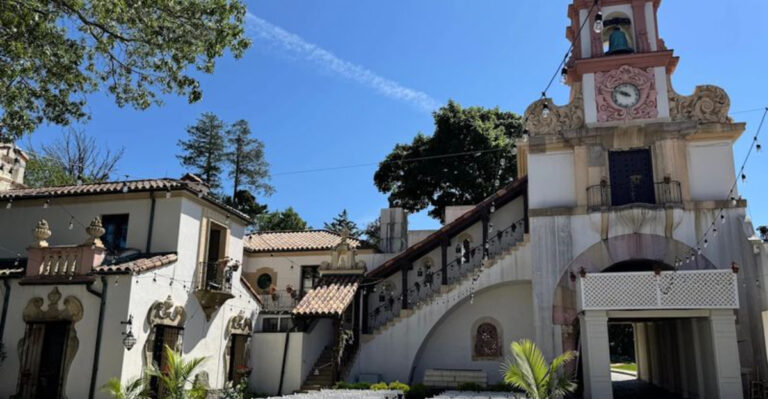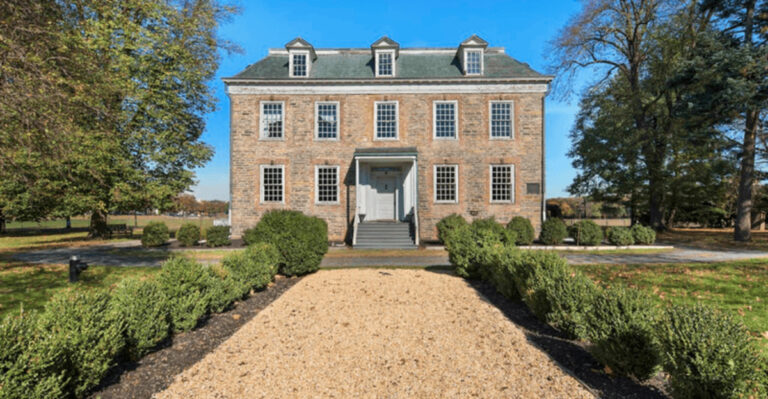15 Antebellum Homes In The South You Shouldn’t Miss
There’s something awe-inspiring about standing in front of an antebellum home, like you’ve stumbled into a living piece of history. Built before the Civil War, these Southern estates are more than just beautiful buildings; they’re powerful reminders of a complicated past.
I’ve always been drawn to their grand columns, sweeping staircases, and moss-draped oak trees that line the driveways like silent witnesses.
Whether it’s a sprawling plantation or a stately town mansion, each one tells a story of wealth, culture, and legacy.
1. Nottoway Plantation: The South’s White Castle
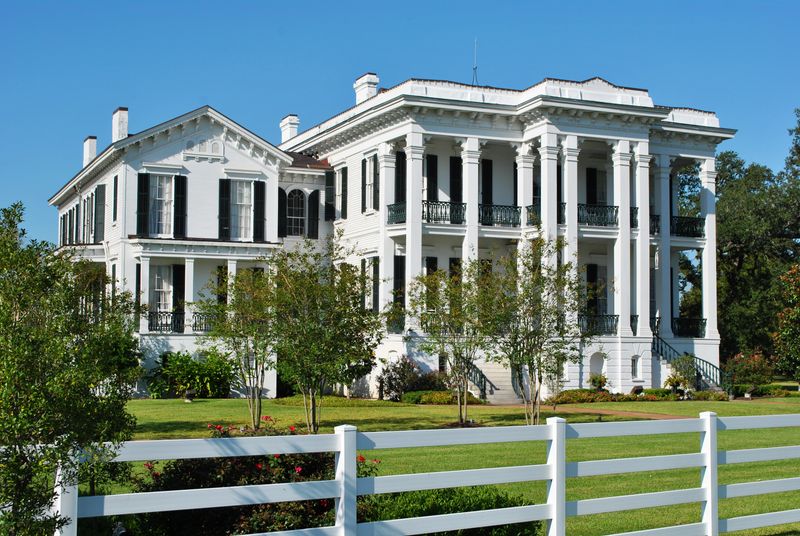
Imagine standing before America’s largest antebellum mansion! Nottoway’s dazzling white façade stretches across a whopping 53,000 square feet with 64 rooms to explore.
Built in 1859 by sugar magnate John Randolph, this Louisiana gem combines Greek Revival and Italianate styles in the most jaw-dropping way.
If walls could talk, these would tell tales of Civil War survival and six generations of family drama. You can actually spend the night here – how cool is that?
2. Oak Alley: Where Trees Create Magic
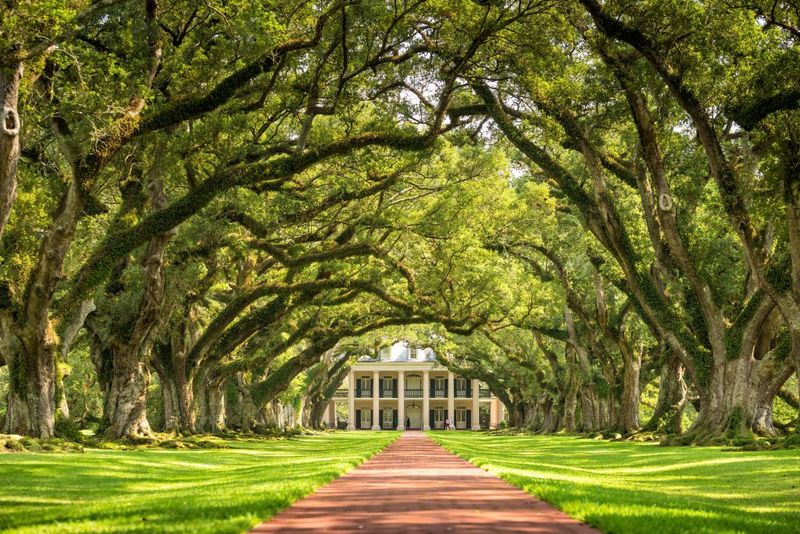
Have you ever seen 300-year-old oak trees form a perfect quarter-mile canopy? Oak Alley’s famous tree tunnel leads to a stunning Greek Revival home that’s graced countless movie scenes.
Located in Vacherie, Louisiana, this 1839 beauty sits majestically along the Mississippi River. The oak alley itself was planted long before the house, creating nature’s perfect frame for this architectural gem.
Sometimes called the “Grande Dame of the Great River Road,” it’s worth the drive just for that first breathtaking view.
3. Longwood: America’s Unfinished Octagonal Wonder
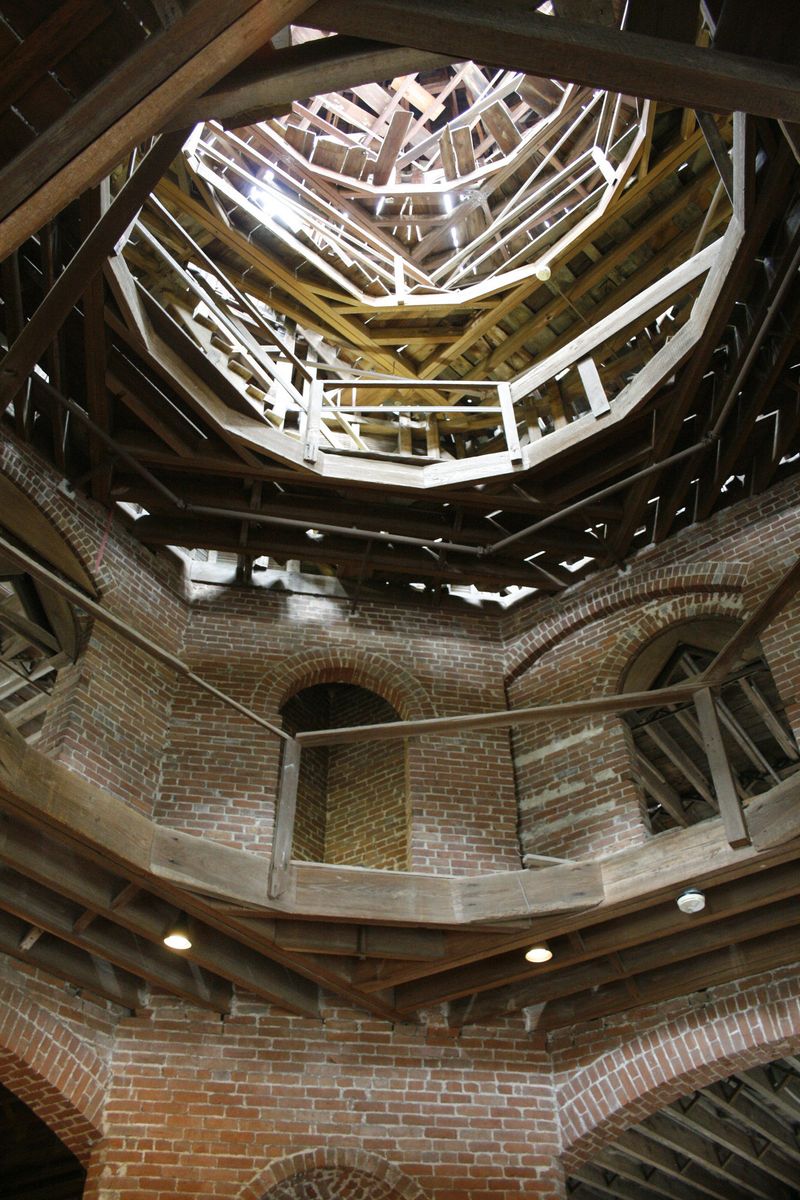
Though never completed, Longwood tells the most dramatic story of interrupted dreams in American architecture. When the Civil War erupted in 1861, Northern workers dropped their tools and fled, leaving this six-story octagonal mansion forever unfinished.
Only the basement was completed, while upper floors remain in their skeletal state. The original owner, Dr. Haller Nutt, died of heartbreak (well, pneumonia) in 1864 before seeing his vision completed.
Where else can you witness such a frozen-in-time testament to shattered Southern ambitions?
4. Stanton Hall: Natchez’s Crown Jewel
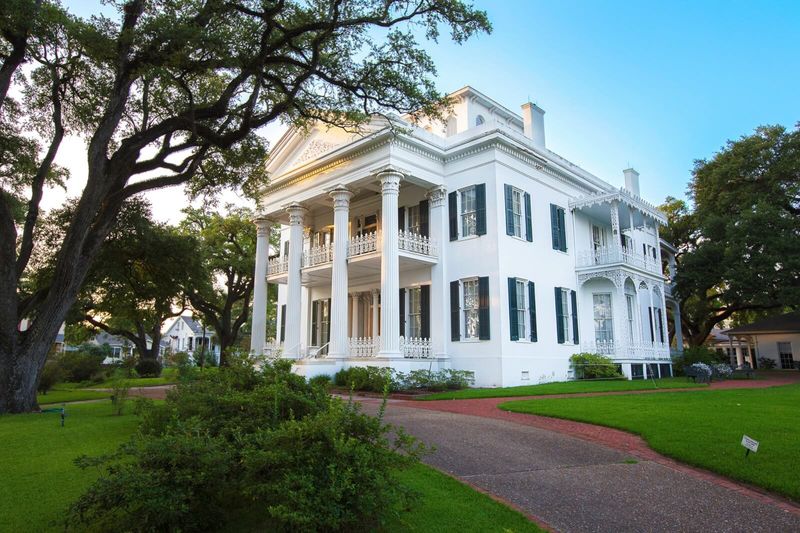
When cotton baron Frederick Stanton built this place in 1857, he spared absolutely no expense. Taking up an entire city block in downtown Natchez, Mississippi, this mansion screams luxury from every inch of its 17,000 square feet.
Marble mantels? Shipped from Italy. Mirrors and furnishings? Imported from France. Even the iron railings came special delivery from New Orleans.
If you’re a movie buff, you might recognize it as Twelve Oaks from the 1939 film premiere party for Gone with the Wind!
5. Rosalie Mansion: The Union’s Mississippi Headquarters

Few antebellum homes have stories as ironic as Rosalie’s. Built in 1823 by a wealthy cotton broker, this Federal-style mansion later became headquarters for Union troops during the Civil War!
Perched dramatically on a bluff overlooking the Mississippi River in Natchez, its position was too strategic for Union General Walter Gresham to ignore.
The family was allowed to stay – but confined to just two rooms while officers took over their home. Look for the original furnishings that survived this unusual occupation.
6. The Burn: Where Civil War Wounds Healed

Would you believe a home named “The Burn” actually saved lives? This 1834 Greek Revival beauty in Natchez got its unusual name from a nearby creek (“burn” is Scottish for stream), not from any fiery disaster.
During the Civil War, it transformed into a Union hospital where countless soldiers recovered from battlefield injuries. The original owner, John P. Walworth, was forced to share his home with the very army he opposed.
Today you can actually sleep in this historic spot as it operates as a charming bed & breakfast.
7. Hay House: The South’s Italian Palace
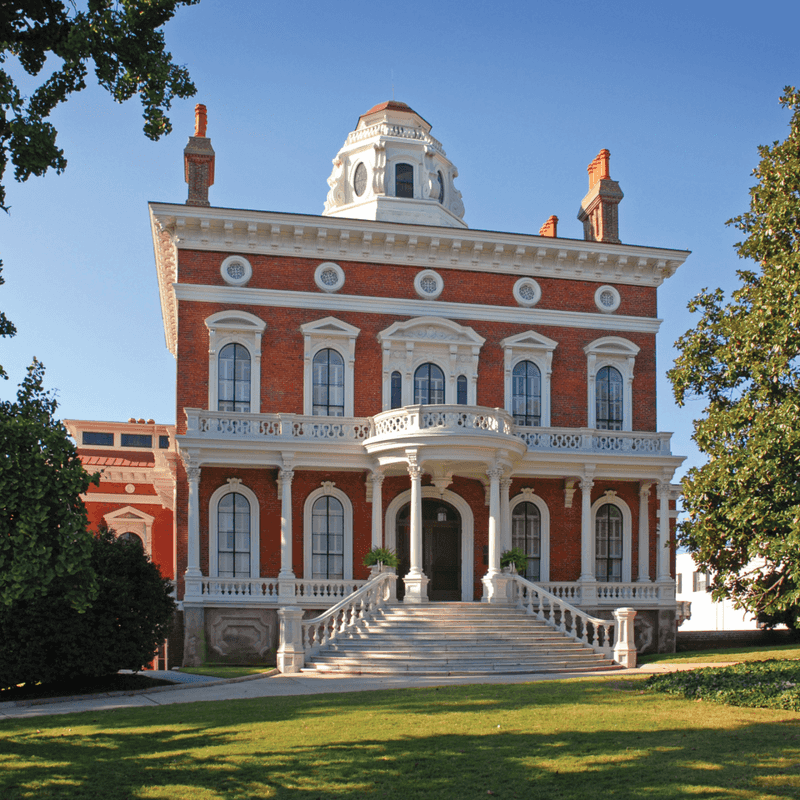
Who needs Italy when Macon, Georgia has the Hay House? Unlike typical Greek Revival mansions, this 1859 showstopper brings Renaissance Italy to the Deep South with its ornate brackets, arched windows, and tower.
The original owner, William Butler Johnston, toured Europe for a year and returned determined to outdo his neighbors. Mission accomplished!
Inside, prepare to gasp at the 18-foot ceilings, marble fireplaces, and a stunning stained glass dome. Locals call it the “Palace of the South” for good reason – no other antebellum home has this much Italian flair!
8. Belle Mont Mansion: Jefferson’s Alabama Influence
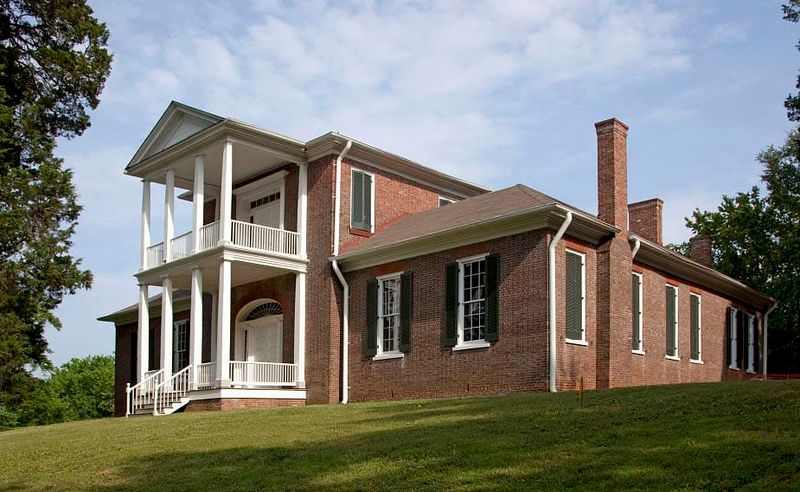
Thomas Jefferson never designed this house, but his architectural fingerprints are all over it! Built between 1828 and 1832 in Tuscumbia, Alabama, Belle Mont showcases the Jeffersonian style with its symmetrical design and classical proportions.
Unlike the flashier mansions of the era, this one embraces elegant simplicity. The red brick exterior contrasts beautifully with white trim, while inside, the unique T-shaped floor plan creates surprisingly airy spaces.
Fun fact: it was built by a doctor who later became Alabama’s second governor!
9. The Pillars: Lowndesboro’s Greek Temple
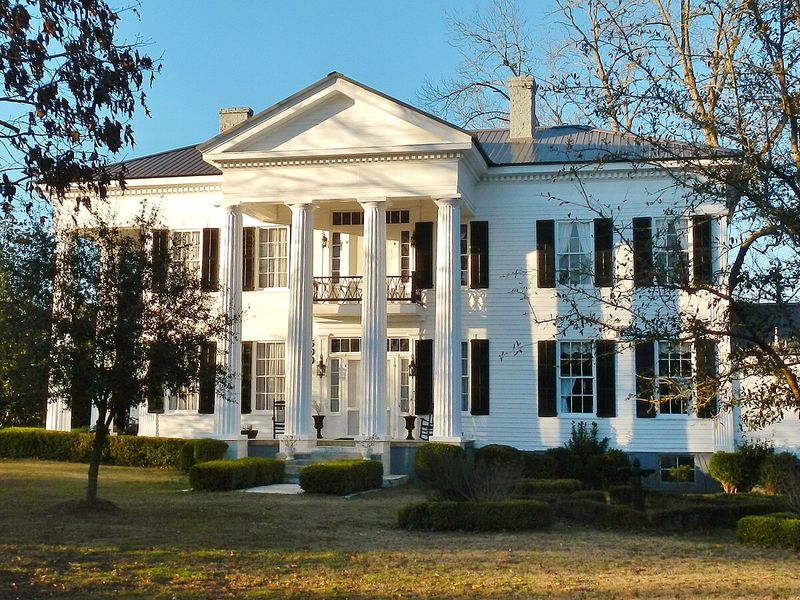
How many houses can claim to have saved a town? During the Civil War, The Pillars’ owner convinced Union soldiers not to burn Lowndesboro by graciously inviting officers to dinner!
Built in 1857, this Alabama gem features six massive Doric columns supporting a triangular pediment that makes it look like an ancient Greek temple dropped into the countryside.
The interior’s curved staircase seems to float without visible support – a marvel of 19th-century engineering. Look for the original painted ceiling murals that have survived over 160 years.
10. Kirkwood: Eutaw’s Architectural Masterpiece
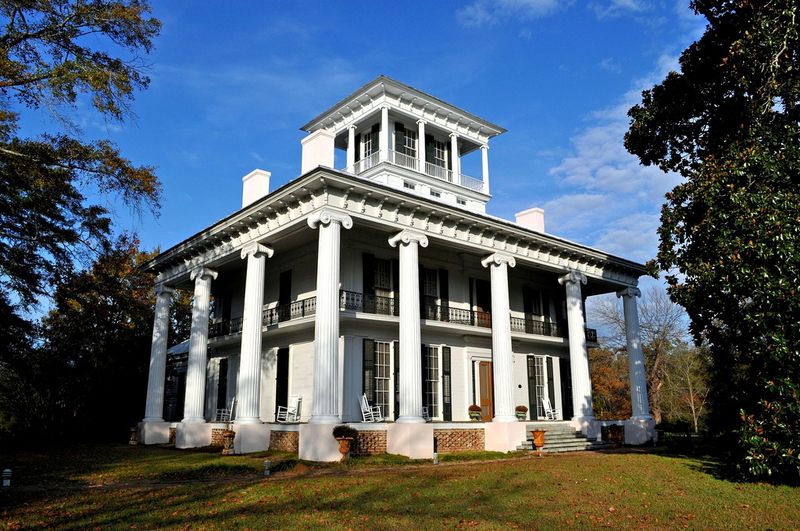
Sometimes called “the most photographed house in Alabama,” Kirkwood makes jaws drop with its magnificent two-story colonnade. Built in 1858, just before the Civil War changed everything, this Greek Revival stunner sits in tiny Eutaw, Alabama.
Four enormous Corinthian columns support a dramatic front portico, while inside, twin spiral staircases create a sense of theatrical grandeur.
The entire mansion was constructed using materials found on the plantation – even the bricks were made on site! If you visit in spring, don’t miss the spectacular heirloom camellias blooming around the grounds.
11. Grey Columns: From Plantation to Presidential Home
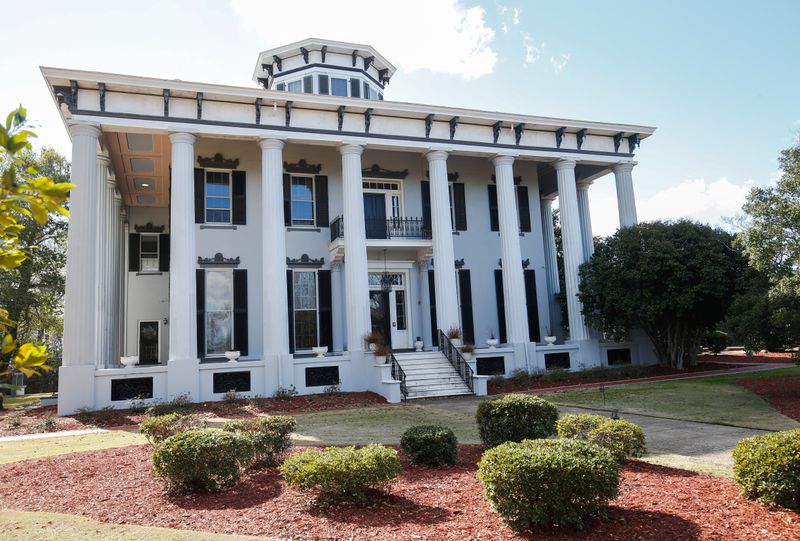
Few antebellum homes have transformed their legacy quite like Grey Columns. Built in 1857 as a plantation home in Tuskegee, Alabama, it now serves as the official residence for Tuskegee University’s president – what a journey!
The imposing Greek Revival structure features eight massive columns supporting a classic pediment. Original heart pine floors and hand-carved woodwork remain intact throughout the interior.
Given its connection to the historically Black Tuskegee University, it represents a powerful symbol of how these spaces can be reclaimed and repurposed.
12. Black Thistle: The Underwood Family Legacy
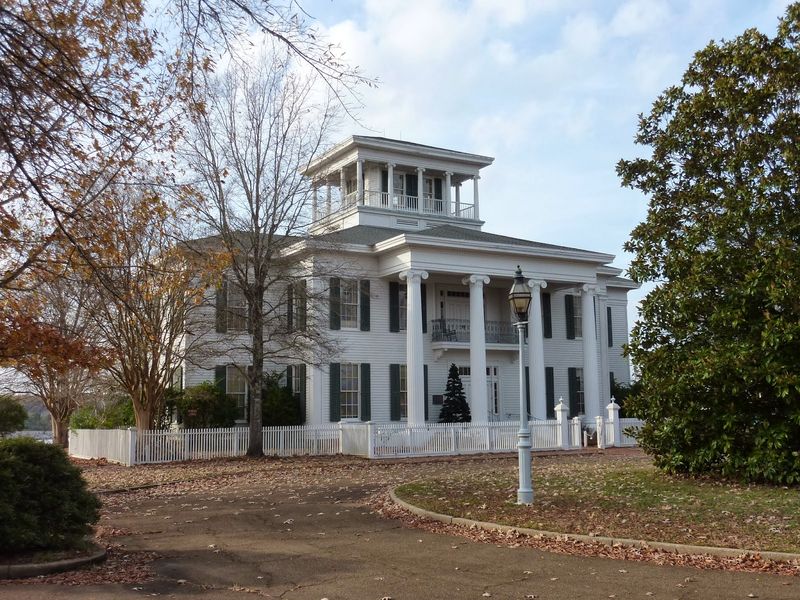
While many antebellum homes boast about their size, Black Thistle charms visitors with its perfect proportions. Built in 1837 in Alabama, this Greek Revival jewel showcases the ideal balance between grandeur and livability.
The unusual name comes from the Scottish thistle motif incorporated throughout the home – a nod to the Underwood family’s heritage. Six slender columns support a delicate entablature, creating an elegant silhouette against the sky.
Unlike many of its contemporaries, it survived the Civil War completely intact, with original furnishings still in place.
13. Gaineswood: Demopolis’ Architectural Evolution

Most antebellum mansions were built all at once, but Gaineswood evolved over 18 years! Beginning as a simple dogtrot cabin in 1843, owner Nathan Bryan Whitfield kept expanding until 1861, creating one of America’s most unusual Greek Revival masterpieces.
The interior features some of the most elaborate plasterwork in the country, with domed ceilings that seem to float above rooms. Whitfield designed most elements himself despite having no formal architectural training.
Ghost hunters take note – legend says the spirit of Whitfield’s sister-in-law still haunts the music room!
14. Magnolia Hall: Natchez’s Last Great Mansion
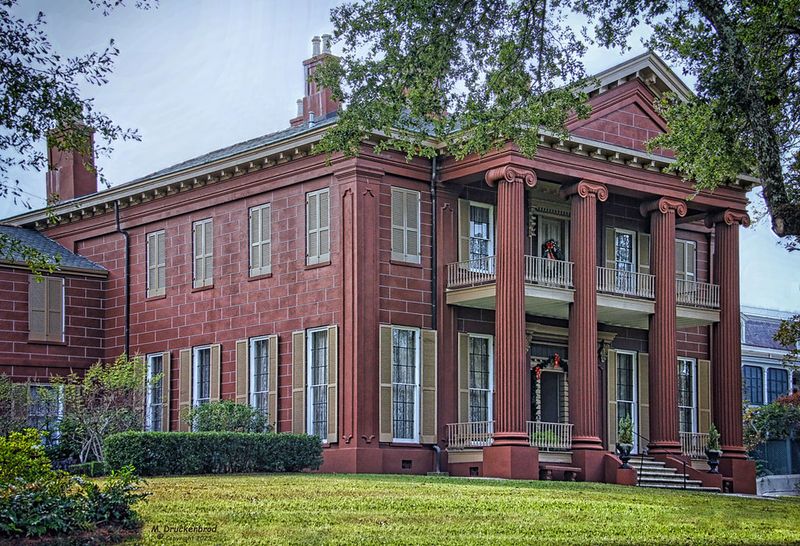
Finished in 1858, just three years before the Civil War erupted, Magnolia Hall holds the distinction of being the last great mansion built in Natchez during the antebellum era. Its timing couldn’t have been worse for owner Thomas Henderson!
The Greek Revival structure features unusual cast-iron magnolia blossoms decorating its columns and balconies – a rare surviving example of ornamental ironwork from this period. During an 1862 Union bombardment, a cannonball actually struck the house!
You can still see the repaired damage in the parlor ceiling today.
15. Shadows-on-the-Teche: Louisiana’s Haunted Beauty

Shrouded by ancient live oaks dripping with Spanish moss, Shadows-on-the-Teche looks like it materialized from a gothic novel. Built in 1834 along Louisiana’s Bayou Teche, this atmospheric plantation home has survived hurricanes, floods, and Union occupation.
Unlike many restored antebellum homes, Shadows contains an astonishing collection of original furnishings, art, and over 17,000 documents chronicling four generations of the Weeks family. The gardens leading down to the bayou feel like stepping into another century.
Ghost stories? You bet – visitors regularly report mysterious footsteps in empty rooms!

